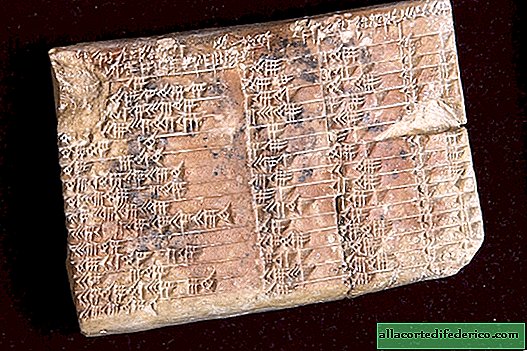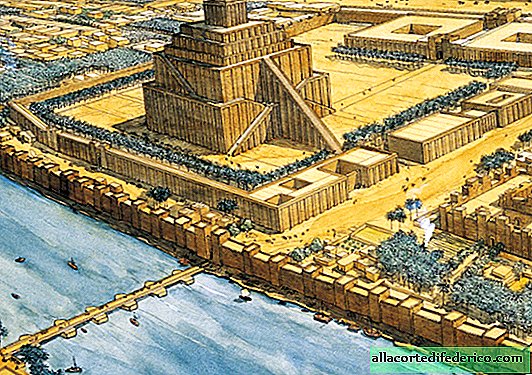Babylonian alphabet: where trigonometry first appeared
Usually, with the word "trigonometry", the humanitarian mind begins to wedge. All these sines, cosines, tangents and cotangents can cause stupor in any untrained person. But mathematicians eyes light up! Well, what is not another language? Therefore, it is not surprising that the first trigonometric table of the times of King Hammurabi was found in Babylon - perhaps because of such records and calculations on the angles and sides of the triangle, the legend of the Babylonian mixture of languages went.
Cuneiform Trigonometry
In fact, the clay tablet was found in Iraq at the beginning of the 20th century and only in 1945 could they interpret that it was written on some mathematical data. The 12.7 by 8.8 cm tile is widely known as Plimpton 322 and named after its owner, the American philanthropist George Arthur Plimpton, who acquired the artifact in 1922 from the archaeological finds and antiquities dealer Edgar Banki (from whom they say they wrote off image of Indiana Jones).

Comparing the style of the inscriptions with other clay tablets, the researchers concluded that Plimpton 322 dates from 1822 to 1726 BC, that is, about the time when King Hammurabi ruled the Babylonian empire. When scientists realized that this was trigonometry, they had to rethink the history of this science. It was previously believed that the first trigonometric calculations were the work of the Greek astronomer Hipparchus about 120 BC.
This conclusion suggests that the Babylonians, and not the ancient Greeks, were the first to study trigonometry, using it in architectural calculations to build pyramids, temples and palaces.
Library of babylon
What was the difficulty of decrypting the table? Experts interpreted 15 lines of characters written on a tablet in four columns as descriptions of 15 right-angled triangles with different variants of acute angles. 70 years ago, researchers realized that the numbers next to the triangles make up the so-called "Pythagorean triples" - sets of three positive integers x, y and z that satisfy the equation z ^ 2 = x ^ 2 + y ^ 2. They understood, but why they needed this table, they could not answer.

Only recently, with the help of complex calculations, scientists realized that we are talking about a fundamentally new type of trigonometry. Instead of angles and circles, he was based on the relationships between the numbers of the Pythagorean Three. Perhaps such an unusual choice is due to the fact that if modern people mainly use the decimal number system, then this was not enough for the inhabitants of ancient Babylon and they used the sixty!
Be that as it may, the find reveals a lot of interesting things not only for historians, but also for mathematicians. Experts already say that the trigonometric research of the ancient deceased civilization will be an excellent tool for modern mathematical science.

















